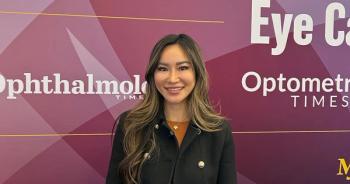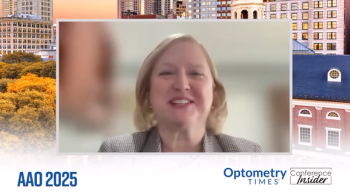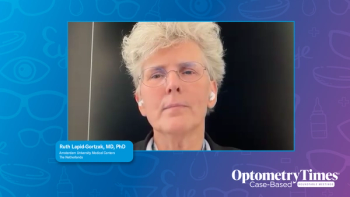
Study finds high risk of myopic maculopathy in population over 85 years old
The Russian study also found that the aging of a young myopic generation may result in even more visual impairment and blindness as the result of myopic macular degeneration.
The take-away message from a population-based study of highly myopic individuals 85 years of age and older was that a high risk of developing myopic maculopathy and marked visual impairment was prevalent,1 according to first author Mukharram M. Bikbov, MD, from the Ufa Eye Research Institute, Ufa, Russia.
The investigators explained that with older age a risk factor for development of myopic macular degeneration (MMD), the aging of a young myopic generation may result in even more visual impairment and blindness as the result of MMD.2
They conducted a study to assess the prevalence of and associations of MMD in older individuals recruited in a population-based manner. They then compared the results with the findings from another population-based study previously conducted with a similar study design and in the same geographic region on younger individuals.
The Ural Very Old Study included 1,526 of 1,882 eligible individuals who were 85 years and older; 60.9% of these (930 individuals; mean age, 88.6 years) had fundus images available for assessment.
The authors explained that MMD was defined by the presence of macular patchy atrophies (stages 3 and 4 as defined by the Pathologic Myopia Study Group).3
MMD prevalence
MMD was found in 21 of 930, for a prevalence rate of 2.3% (95% confidence interval [CI], 1.3–3.3). Ten individuals had stage 3 MMD and 11 participants had stage 4 MMD.
In those 2 stages, the authors reported that “the prevalence of binocular moderate-to-severe vision impairment was 4 of 10 (40%; 95% CI, 31–77) and 7 of 11 (64%; 95% CI, 30–98), respectively, and the prevalence of binocular blindness was 2 of 10 (20%; 95% CI, 0–50) and 3 of 11 (27%; 95% CI, 0–59), respectively.”
An analysis of the axial lengths showed that in low myopia (axial length, 24.0 to <24.5 mm), moderate myopia (axial length, 24.5 to <26.5 mm), and high myopia (axial length, ≥26.5 mm), the respective MMD prevalence rates in the right eyes were 0 of 46 eyes (0%), 3 of 40 eyes (8%; 95% CI, 0–16), and 7 of 9 (78%; 95% CI, 44–100) and the respective MMD prevalence rates in the left eyes were 1 in 48 eyes (2%; 95% CI, 0–6), 4 of 36 eyes (11%; 95% CI, 0–22), and 3 of 4 eyes (75%; 95% CI, 0–100).
Multivariable analysis showed that a higher MMD prevalence rate (odds ratio, 8.89; 95% CI, 3.43–23.0) and a higher MMD stage (beta, 0.45; B, 19; 95% CI, 0.16–0.22) (p < 0.001 for both comparisons) were correlated with longer axial length but not any other ocular or systemic parameter.
Bikbov and colleagues concluded, “The MMD prevalence (stages 3 and 4) in very old individuals increased 8.89-fold for each millimeter increase in the axial length, with a prevalence of 75% or higher in highly myopic eyes. In old age, highly myopic individuals have a high risk of eventually developing MMD with marked vision impairment.”
References
Bikbov MM, Gilmanshin TR, Kazakbaeva GM, Panda-Jonas S, Jonas JB. Prevalence of myopic maculopathy among the very old: The Ural Very Old Study. Invest Ophthalmol Vis Sci. 2024;65:29. doi:
https://doi.org/10.1167/iovs.65.3.29 Morgan IG, Ohno-Matsui K, Saw SM. Myopia. Lancet. 2012;379:1739–1748.
Ohno-Matsui K, Kawasaki R, Jonas JB, et al. International classification and grading system for myopic maculopathy. Am J Ophthalmol. 2015;159:877–883.
Newsletter
Want more insights like this? Subscribe to Optometry Times and get clinical pearls and practice tips delivered straight to your inbox.


















































.png)


